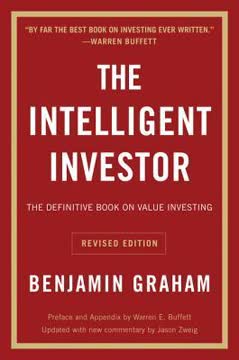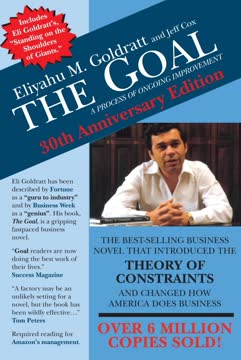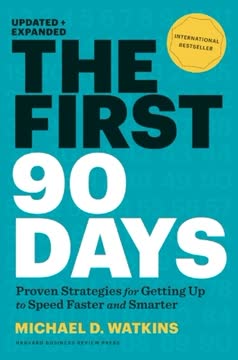Key Takeaways
1. Focus on a strong, well-defined core business for sustainable growth
"Few companies grow profitably and sustainably, though all plan to do so."
Defining the core. A company's core business is the set of products, capabilities, customers, channels, and geographies that define its essence and provide the foundation for profitable growth. It's crucial to accurately define your core, as misunderstanding it can lead to strategic errors and premature diversification.
Power of focus. Companies with a strong, focused core consistently outperform diversified conglomerates. Our analysis shows that:
- 80% of sustained value creators had one core business with a leadership position
- Single-core companies have a higher probability of achieving sustained value creation than multi-core companies
- Spin-offs and divestitures that increase focus often lead to improved performance
Characteristics of strong cores. The most successful core businesses typically exhibit:
- Leadership economics in their primary market
- A loyal and growing customer base
- Ability to reinvest profits into strengthening the core
- A well-defined, repeatable model for expansion
2. Understand and expand your full core potential before diversifying
"The better performing of your business units are likely to be those operating the furthest below their full potential."
Hidden value in strong cores. Paradoxically, the strongest core businesses often have the most untapped potential. Many companies underestimate their core's full economic potential in three key areas:
- Increasing returns to market leadership
- Influence over industry reinvestment
- Ability to shape the extended industry profit pool
Maximizing core potential. Before seeking growth elsewhere, companies should thoroughly assess and exploit opportunities within their core:
- Analyze profit numbers and map the profit pool across competitors and customer segments
- Identify underserved microsegments or customer needs
- Optimize pricing and operational efficiency
- Expand geographically or into adjacent product lines
- Increase share of wallet with existing customers
Case study: W.W. Grainger. The industrial supply distributor discovered its addressable market was ten times larger than initially believed. By focusing on expanding its core through increased store density and broader product offerings, Grainger grew revenues from $1.1 billion in 1985 to $6.9 billion in 2008, outpacing industry growth.
3. Pursue logical adjacencies that leverage and reinforce your core strengths
"Most successful companies achieve most of their growth by expanding into logical adjacencies that have shared economics and reinforce the core business, not from unrelated diversifications or moves into 'hot' markets."
Types of adjacency expansion:
- Customer and product adjacencies (e.g., ServiceMaster expanding from carpet cleaning to broader cleaning services)
- Share-of-wallet adjacencies (e.g., American Express adding new financial products)
- Capability adjacencies (e.g., Amazon leveraging its e-commerce platform for third-party sellers)
- Network adjacencies (e.g., Microsoft entering the game console market to protect its software dominance)
- New-to-the-world adjacencies (e.g., Apple's expansion into music with iTunes and iPod)
Evaluating adjacencies. When considering expansion opportunities, assess:
- How much it strengthens or reinforces the core
- Chances of achieving leadership in the new segment
- Potential defensive benefits against competitors
- Strategic positioning for future moves
- Ability to execute successfully
Repeatable formula. The most successful companies develop a repeatable formula for adjacency expansion, allowing them to consistently identify and capture new growth opportunities that leverage their core strengths.
4. Recognize when industry turbulence necessitates core redefinition
"The management teams that have been most successful in building a strong core business and that have benefited from adjacency expansion are also the most vulnerable to industry turbulence."
Signs of industry transformation:
- Erosion of low-end product segments
- Core customer defection
- Emergence of new microsegments
- Blurring of traditional business boundaries
- Rise of new intermediaries or control points
Types of core redefinition:
- Frontal assault on the core business model (e.g., low-cost airlines disrupting traditional carriers)
- Shifting to new business boundaries (e.g., newspapers adapting to digital media)
- Structural redefinition of the core (e.g., Nokia transforming from a paper mill to a telecommunications leader)
Assessing the need for redefinition. Ask yourself:
- Are venture capitalists funding competitors targeting your core?
- Are new entrants gaining market share in marginal segments?
- Are there emerging customer segments you can't serve with your current capabilities?
- Could regulatory changes threaten your competitive position?
5. Balance core investment with strategic adjacency expansion
"The constant tension between mining the core and breaking out into something new exists in every business."
The growth paradox. Companies face a delicate balance:
- Overinvesting in the core can lead to missed growth opportunities and vulnerability to disruptive threats
- Premature or excessive diversification can dilute focus and erode profitability
Optimal growth strategy. Our research shows that companies achieving both high revenue growth (>10%) and high profit growth (>10%) over a ten-year period deliver the highest shareholder returns (17.7% annually).
Strategic considerations:
- Regularly assess your business's position in its growth cycle (optimizing core, adjacency expansion, or redefinition)
- Allocate resources based on potential for market leadership and economic returns
- Develop a clear point of view on industry trends and how they shape your growth strategy
- Balance short-term performance with long-term positioning
6. Implement organizational structures that support core growth and redefinition
"All organizations inhibit growth."
Organizational challenges. Core redefinition and adjacency expansion often require:
- Different pricing strategies
- New talent and skill sets
- Adjusted reward structures
- Modified channel relationships
Structural options:
- Integrate new initiatives within existing core business
- Create separate units within the corporate structure
- Establish independent entities with outside ownership
Factors influencing structure choice:
- Speed of implementation required
- Ability to attract necessary talent
- Need for strategic neutrality (e.g., avoiding channel conflicts)
- Access to capital and valuation considerations
Success factors for transformation:
- Short timeframe and sense of urgency
- Clear, motivating vision for the end state
- Strong, committed CEO leadership
- Significant economic stakes for management
- Willingness to change or replace key personnel as needed
7. Continuously evaluate and adapt your growth strategy
"The Jenga Phenomenon: The more opportunities that I seize, the more opportunities that multiply before me."
Strategic vigilance. Regularly assess your growth strategy to avoid common pitfalls:
- Premature abandonment of the core for far-flung adjacencies
- Excessive mining of the core without developing new growth vehicles
- Failure to anticipate the need for core redefinition
Key questions for ongoing evaluation:
- What is our most tightly defined profitable core, and is it gaining or losing strength?
- Where are our business boundaries likely to shift in the future?
- Are there emerging competitors that pose long-term threats to our core?
- Are we achieving the full strategic and operating potential of our core business?
- What is our complete set of potential adjacencies, and are we approaching them systematically?
- How is our view of the industry's future shaping our strategy?
- Should major new growth initiatives be pursued inside, adjacent to, or outside the core?
- Is industry turbulence changing the fundamental source of future competitive advantage?
- Are our organizational enablers and inhibitors to growth properly balanced?
- What strategic principles should consistently guide our major decisions?
Adapting to change. In today's rapidly evolving business landscape, the ability to recognize and respond to shifts in your competitive environment is crucial. Regularly reassess your core strengths, market position, and growth opportunities to ensure your strategy remains relevant and effective.
Last updated:
FAQ
What's "Profit from the Core: A Return to Growth in Turbulent Times" about?
- Focus on Core Business: The book emphasizes the importance of focusing on a company's core business to achieve sustainable and profitable growth.
- Updated Insights: Originally published in 2001, this updated edition addresses the challenges companies face in turbulent economic times, such as the 2007 financial crisis.
- Research-Based Strategies: It is based on over ten years of research by Bain & Company, providing a data-driven approach to revitalizing core business strategies.
- Practical Guidance: The authors, Chris Zook and James Allen, offer practical advice for executives and managers to identify and leverage their core strengths for growth.
Why should I read "Profit from the Core"?
- Timeless Advice: The book offers timeless strategies for finding profitable growth, especially relevant in uncertain economic climates.
- Proven Frameworks: It provides proven frameworks and methodologies for companies to refocus on their core strengths.
- Real-World Examples: The book includes fresh examples of companies that successfully navigated downturns by focusing on their core.
- Strategic Insights: Readers gain strategic insights into how to discourage competitors and build a leadership position in their core markets.
What are the key takeaways of "Profit from the Core"?
- Core Focus is Crucial: Sustainable growth is often achieved by focusing on and strengthening the core business.
- Adjacency Expansion: Companies should expand into logical adjacencies that reinforce the core, rather than diversifying too broadly.
- Hidden Assets: Many companies have hidden assets within their core that can be leveraged for new growth opportunities.
- Leadership Economics: Achieving leadership in the core business can lead to higher profitability and competitive advantage.
What are the best quotes from "Profit from the Core" and what do they mean?
- "Focus on your core": This quote underscores the book's central theme that companies should concentrate on their core competencies to drive growth.
- "The better performing your business, the more likely it is performing below its full potential": This highlights the paradox that successful businesses often have untapped potential within their core.
- "The greatest source of strategic error stems from an inaccurate understanding of the core and its full potential": This emphasizes the importance of accurately defining and understanding the core business to avoid strategic missteps.
- "Sustained and profitable growth requires a strong, well-defined core": This quote encapsulates the book's message that a robust core is essential for long-term success.
How does "Profit from the Core" define a core business?
- Core Definition: The core business is defined as the set of products, capabilities, customers, channels, and geographies that form the essence of what the company is or aspires to be.
- Inside-Out Perspective: It involves understanding the company's unique strengths and how they can be leveraged for competitive advantage.
- Outside-In Perspective: It also considers the external market boundaries and how the company fits within them.
- Strategic Assets: Identifying critical strategic assets, such as loyal customers and differentiated capabilities, is key to defining the core.
What is the "adjacency expansion" strategy in "Profit from the Core"?
- Logical Extensions: Adjacency expansion involves moving into related segments or businesses that utilize and reinforce the core.
- Sequential Moves: It often involves a series of sequenced moves that can redefine the core business over time.
- Defensive and Offensive: This strategy serves both to protect the core from competitors and to capture new growth opportunities.
- Success Patterns: Successful companies like Nike and Dell have used adjacency expansion to sustain growth by leveraging their core strengths.
How does "Profit from the Core" suggest companies handle industry turbulence?
- Redefine the Core: Companies may need to redefine their core business in response to industry turbulence and changing market conditions.
- Speed and Agility: Quick and decisive action is crucial to adapt to new realities and maintain competitive advantage.
- Strategic Vision: A clear vision and strategic principles are essential to guide the redefinition process.
- Organizational Readiness: Preparing the organization for change, including talent and resource allocation, is critical for successful transformation.
What role do hidden assets play in "Profit from the Core"?
- Untapped Potential: Hidden assets within the core can be the seeds for the next wave of growth.
- Strategic Leverage: Identifying and leveraging these assets can provide a competitive edge and open new market opportunities.
- Examples and Case Studies: The book provides examples of companies that successfully uncovered and utilized hidden assets.
- Renewal and Innovation: Hidden assets can drive innovation and renewal within the core business, leading to sustained growth.
How does "Profit from the Core" address the concept of leadership economics?
- Market Leadership: Achieving leadership in the core business can lead to superior profitability and market influence.
- Economies of Scale: Leadership often results in economies of scale, driving down costs and increasing margins.
- Reinvestment Advantage: Leaders can outinvest competitors, further strengthening their market position.
- Competitive Deterrence: Strong leadership in the core can discourage competitors from entering the market, protecting the company's position.
What are the common pitfalls in adjacency expansion according to "Profit from the Core"?
- Entrenched Positions: Expanding into areas dominated by entrenched competitors can be risky and unprofitable.
- Profit Pool Overestimation: Overestimating the size and potential of new markets can lead to strategic errors.
- False Bundling: Attempting to bundle unrelated products or services can dilute focus and resources.
- Unexpected Competitors: New entrants from unexpected directions can disrupt expansion plans and threaten the core.
How does "Profit from the Core" suggest companies measure their growth potential?
- Full Potential Assessment: Companies should assess whether their core is operating at its full potential by examining market share, profitability, and customer loyalty.
- Hidden Value Identification: Identifying hidden value within the core can reveal new growth opportunities.
- Reinvestment Rates: Analyzing reinvestment rates compared to competitors can indicate future growth potential.
- Strategic Alignment: Ensuring that growth initiatives align with the core's strengths and market opportunities is crucial for realizing full potential.
What strategic principles does "Profit from the Core" recommend for sustained growth?
- Core Focus: Maintain a strong focus on the core business to drive sustainable growth.
- Adjacency Expansion: Use a repeatable formula to expand into logical adjacencies that reinforce the core.
- Leadership Economics: Strive for market leadership in the core to achieve superior profitability.
- Adaptability: Be prepared to redefine the core in response to industry turbulence and changing market conditions.
Review Summary
Profit from the Core receives mixed reviews, with an average rating of 3.79 out of 5. Some readers find the book's focus on core business strategy insightful and relevant, while others criticize it for being repetitive and lacking depth. Positive reviews highlight the book's emphasis on understanding and leveraging a company's core assets. Critics argue that the concepts are oversimplified and could have been presented more concisely. The book's real-world examples and case studies are appreciated, though some readers note that the advice may not be universally applicable.
Similar Books










Download PDF
Download EPUB
.epub digital book format is ideal for reading ebooks on phones, tablets, and e-readers.





